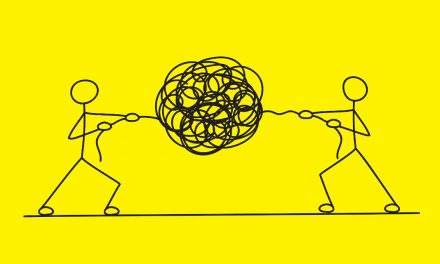By Jack Cumming
The idea is simple. Wouldn’t it be wonderful if there were a universally accessible record of your health history? In that case, any medical professional needing to treat you could have instant access to your history. That’s the dream.
The dream of universal records has existed for many decades. The idea is that a physician responding to a presenting crisis, perhaps in an emergency room after an accident, should have instant access to any patient’s medical history. The format should be so familiar that the physician knows instantly where to look.
Medication allergies are just one example of what might be critical in that moment. Seamless transfers, say, from hospital to skilled nursing, is another. Imagine, too, the safeguards artificial intelligence can provide in a situation in which quick analysis is critical. Consider a hospital discharge order, “Hang an IV bag at 1 am,” accompanying a resident transferred to assisted living. The benefit of machine analysis and standardization is evident. Emergencies come without warning.
Only after the healthcare industry failed to agree on a standard did government intervene. In 2009, which now seems a long time ago, the American Recovery and Reinvestment Act mandated that providers have “meaningful use” of electronic medical records (EMR) –often called “electronic health records (EHR)” – by January 1, 2014 or risk reduced Medicaid and Medicare reimbursement. Nearly a decade later, the dream still eludes us.
Challenges
Many software vendors jumped into the effort to produce an EHR. The business opportunity seemed irresistible. Vendors, though, have not fulfilled the dream. Why not?
First, the pursuit of proprietary advantage has detracted from the need for universality. Vendors have failed to agree on standard record and database conventions.
Second, most of the vendors’ products started as billing systems. That’s a provider interest, but sound EHRs place patient needs and treatments first. Provider payment interests are not the same as patient interests.
Third, and consistent with the second challenge, the need for universal, comprehensive information differs from one provider category to another. Vendors often specialize in one, perhaps two, target healthcare settings but not in others.
Fourth, there has been a growing political perception that shared information, even when it can be helpful for patient health and treatment, violates privacy. The Health Insurance Portability and Accountability Act of 1996 (HIPAA, pronounced “hip-uh”) put privacy protection before treatment efficacy.
The focus on provider purchasers rather than consumers has another consequence. A provider may choose to delete information after seven years, for instance, depending on statutes. A well-informed consumer, however, might want to have a lifetime record. It might be relevant for an older patient, and a treating physician, that he or she had polio at the age of 14 in 1949.
Meeting the Need
An ideal EHR would not only be universal and readily accessible when and as needed, it would also follow an individual for life from pre-birth through post-mortem.
Because of how vendors target purchasers by category (one system for hospitals, another for skilled nursing, etc.), a patient’s health records (and personal wishes) may not follow them automatically when they move, say, from a care setting to a hospital and back again. That gives rise to the need for workarounds.
One is the POLST form (Physicians Orders for Life-Sustaining Treatment), which is a paper form with a garish bright pink color. Yes, that’s right. It’s a paper form that supposedly goes with the patient from one setting to another. Healthcare providers are expected to read and heed the form. How likely is that in the heat of a time-critical medical emergency?
Data Exchanges
Another awkward, costly workaround is a regional or local data exchange. One such regional data exchange describes its purpose as follows (we withhold the specific name to focus on the generality): “[Regional] Health Connect is the health information utility that unifies the [regional] healthcare ecosystem.”
The exchange goes on to delineate the purpose for an exchange. “We securely connect providers, patients, private health information exchanges (HIEs) and others to improve the quality and cost of care in our community.” Data exchanges are the duct tape that cobbles together vendor EHR platforms to overcome proprietary formats when standardization is needed.
It gets worse. Because of the absence of an easy-to-use EHR, physicians resort to phone calls, with the lost time that can mean when time is crucial, and even to faxes. How did we let something as important as healthcare depend on last-century technology?
What’s To Be Done?
The specifications for an effective EHR system are not complex. To meet the need the system must include everyone – universal; it must be immediately available on demand – accessible; it must include everything a medical practitioner needs on the spot – sufficient; and it should be complete – lifelong.
Universal, accessible, sufficient, and lifelong. We know what’s needed. We also have an existing record-keeping system that shows that it can be done. The Social Security system tracks data from birth to death and beyond. Not only does it accomplish that Herculean task, but it does it very well and with minimal controversy.
Although record-keeping is just part of our healthcare challenge, it’s a good starting place. We have a tested system already in place. All we need to do is to extend and adapt it to be a diagnostic and medical history system to improve American healthcare. Instead of patching things up with duct tape, let’s fix the infrastructure itself.









TEST